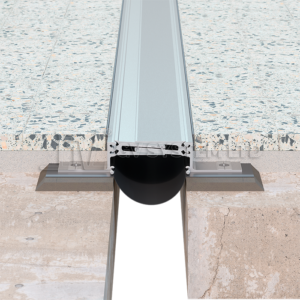Bridging the Gap: Exploring the Significance of Expansion Joints
In the realm of construction and engineering, expansion joints play a critical role in ensuring the integrity and longevity of structures. These seemingly inconspicuous components are designed to accommodate the natural movements and changes that structures undergo due to factors such as temperature variations, seismic activity, and settling. In this article, we delve into the essential role of expansion joints, their types, and their significance in maintaining the stability of diverse infrastructures.
Understanding Expansion Joints
An expansion joint, also known as a movement joint, is a strategic gap or separation in a structure that allows it to expand, contract, or move without causing damage or structural failure. These joints serve as buffers against the stresses and strains that structures experience as a result of external forces and internal changes. By permitting controlled movement, expansion joints prevent cracking, deformation, and overall structural compromise.
Types of Expansion Joints
Expansion joints come in various types, each designed to address specific structural requirements and movement scenarios:
Slab Expansion Joints: These joints are commonly found in concrete structures such as highways, bridges, and floors. They allow for the expansion and contraction of concrete slabs due to temperature changes, preventing cracking and buckling.
Building Expansion Joints: These joints are integrated into the design of buildings to accommodate movements caused by factors like thermal expansion, seismic activity, and wind-induced swaying. They are often concealed within walls, ceilings, and floors.
Pipe Expansion Joints: In piping systems, expansion joints absorb the movement caused by thermal expansion and contraction. They prevent stress on pipes, fittings, and supports, reducing the risk of leaks and failures.
Bridge Expansion Joints: Bridges are subjected to dynamic forces and temperature fluctuations. Expansion joints in bridges allow for movement while maintaining the structural integrity of the bridge deck and supporting components.
Rail Expansion Joints: Rail systems use expansion joints to manage the movement of tracks caused by temperature changes and train traffic. These joints ensure a smooth and safe travel experience for trains.
Seismic Expansion Joints: Structures located in earthquake-prone areas require seismic expansion joints to absorb the movement resulting from seismic activity. These joints contribute to the building’s ability to withstand earthquakes without sustaining significant damage.
Significance of Expansion Joints
Structural Integrity: Expansion joints are essential for preserving the structural integrity of a building or infrastructure. By allowing controlled movement, they prevent stress concentrations that can lead to cracks, fractures, or failure.
Reduced Maintenance Costs: Without expansion joints, structures would be more susceptible to damage and wear, requiring frequent repairs. By incorporating expansion joints, maintenance costs are reduced over the long term.
Enhanced Safety: Expansion joints contribute to the safety of occupants, users, and the general public. They prevent structural failures that could lead to accidents or injuries.
Durability: Structures that incorporate well-designed expansion joints tend to have a longer lifespan. These joints mitigate the effects of environmental factors and wear, ensuring the longevity of the structure.
Flexibility in Design: Expansion joints offer architects and engineers more flexibility in their designs. They enable the creation of complex structures that can accommodate movements without sacrificing aesthetics or functionality.
Prevention of Noise and Vibration: In addition to movement, expansion joints can also mitigate noise and vibration caused by structural shifts. This contributes to a quieter and more comfortable environment for occupants.
Maintenance and Monitoring
While expansion joints contribute significantly to the longevity of structures, they do require regular maintenance and monitoring. Over time, wear and tear can impact their effectiveness. Routine inspections ensure that expansion joints are functioning as intended and identify any potential issues that need to be addressed.
For More Info:-

